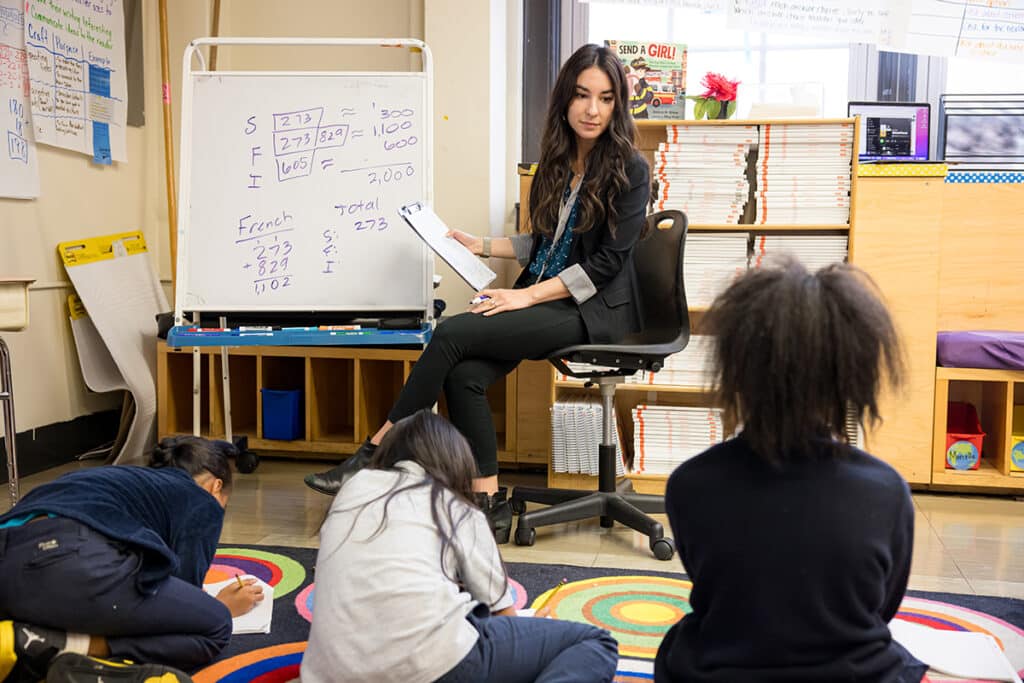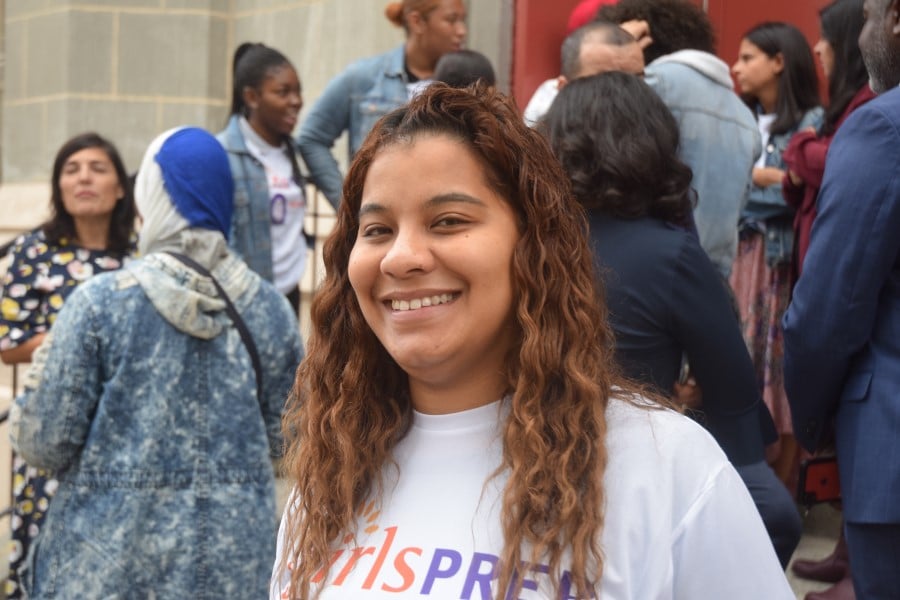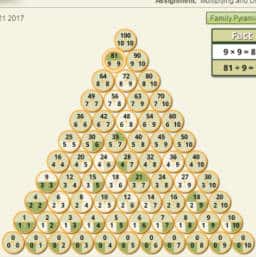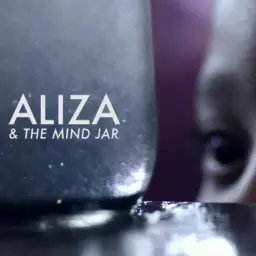Kelli Love is the Yoga and Mindfullness teacher at Girls Prep Bronx Elementary School. Kelli joined Public Prep in 2013. She works with all students to help them manage stress, develop physical/emotional wellness, and habits for personal reflection and self-awareness.
Mindfulness is paying attention to your life, in the here and now, with kindness and curiosity.
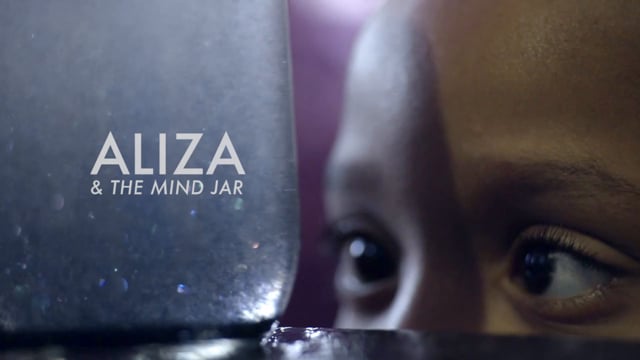
Mindfulness in education begins with educators. The obstacle we are often facing when developing mindfulness in our teaching practice is our own mindset. So many teachers arrive at an interest in mindfulness for their classroom that stems from a desire to learn strategies for their struggling students. While this starting point is understandable, it turns out to be counter intuitive to offering sustainable mindfulness for our kids. This viewpoint often gets us into trouble because, as we know, we can’t teach something we haven’t truly developed ourselves. It comes across as inauthentic to our students, incomplete wisdom and naturally backfires with resistance. Our well of understanding has to be deeper than what we are asking of our students.
Many effective mindfulness and social/ emotional learning programs begin with allowing teachers to explore the practices on themselves for up to an entire year before imparting wisdom to their students! Here are a few things you can experiment with to increase your own understanding of mindfulness within yourself as you reflect on you relationships with students.. In the mindfulness in education world we often call this developing your teacher presence. Mindfulness is inherently relational. From the viewpoint of mindfulness, we are asking ourselves — how am I relating to myself or how am I relating to what is happening with my students. Either way, mindfulness asks us to check out what is happening in the moment with an attitude of curiosity and kindness.
We can ask ourselves questions in these five categories to build mindfulness for ourselves and in our teaching practice: intention, voice, body, breath, needs.
Intention: Imagining how we want to show up gives us a frame of reference in our mind.
What is my intention right now? How will I show up once I walk through the school door in the morning? What types of moments do I want to sink in throughout the day? What is a phrase that will remind me of why I entered teaching? When was a moment today that I aligned with my intention?
Voice: What cues does my voice convey to myself or to my students about where I’m at?
How is my voice sounding right now? What is the energy behind it? Is it fast or slow? Is it loud or soft? Is it contributing to a feeling of safety in the room?
Body: What kinds of signals is my body giving me right now about how I’m doing?
How is my body feeling right now? What physical sensations in my body are showing up? Are they connected to any emotions within myself or within my students? What happens when I bring my attention to the spot where the sensation is located?
Breath: What kind of information is my breath giving me right now? Can it help me change where I’m at?
How is my breath right now? Am I breathing from my mouth or my nose? Is it fast or slow? Does changing my breath help me?
Needs: Is there an unmet need I’m having right now?
What do I need right now? Is there something I can do in this difficult moment that will soothe me? How does it feel to bring awareness to my breath? How does it feel to bring compassion to this moment? Is there a difference after applying just a few moments of mindfulness?
It might be useful to take one of these five categories and spend time focusing on the impact of it each day for a month. Notice how spending time in this category impacts your teacher presence and your sense of mindfulness in your student relationships. Above all, don’t rush. Don’t rush your own practice and don’t rush sharing it with your students. Our students will feel the power of our own practice alone and receive more benefits than we can imagine…
